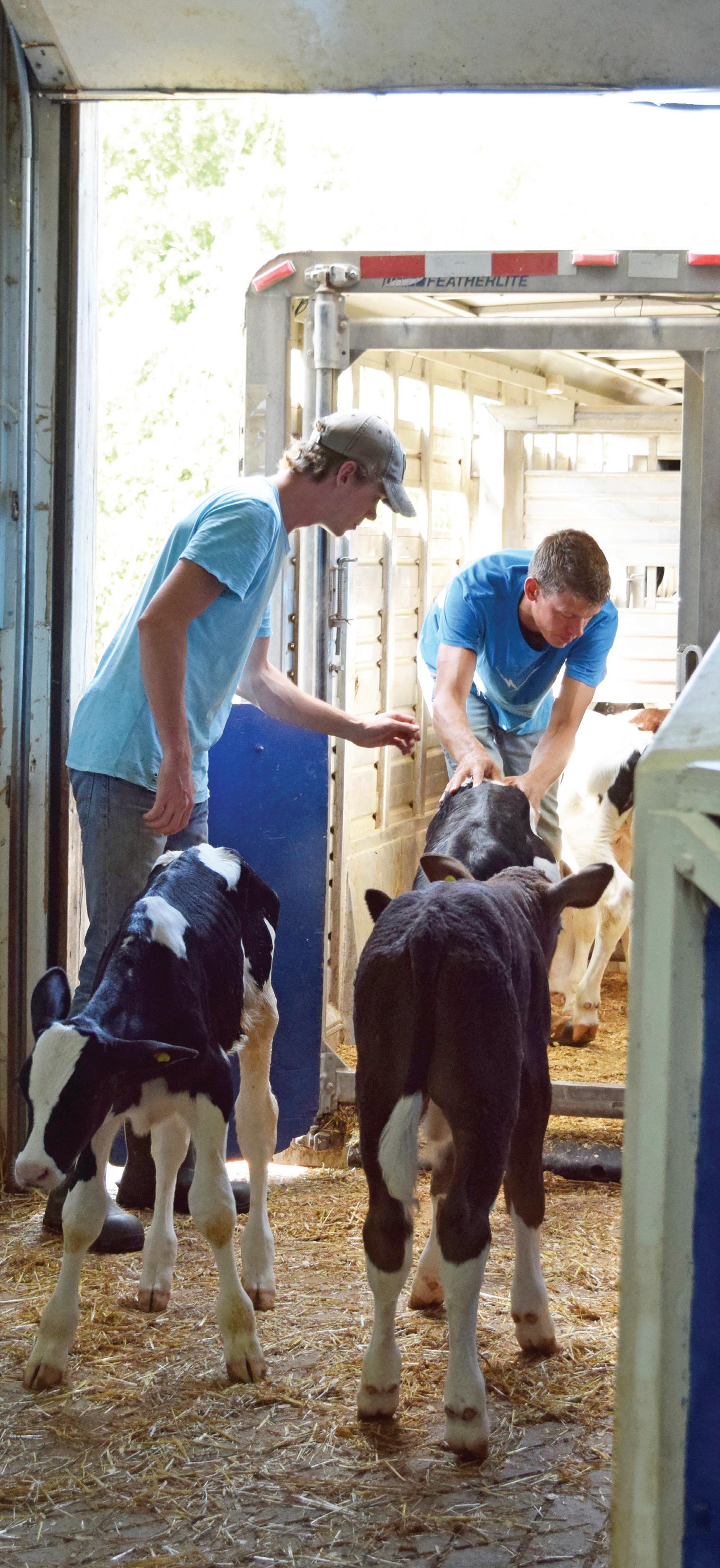
4 minute read
Calf care
from November 2021
by MilkProducer
CONDITIONS TO LOOK FOR BEFORE TRANSPORTING CALVES
By Lilian Schaer CONTRIBUTOR
Increased public scrutiny of farms and farming practices mean it’s never been more important to pay careful attention to the welfare of your cattle. Not only is it the right thing to do for the health and comfort of your animals, it also makes good economic sense. After all, a healthy animal is a productive animal.
Every calf that leaves your farm, whether as a male dairy calf or as a replacement heifer, is a calling card for both your individual operation and the broader livestock industry. It only takes one sick or unfit animal to reflect badly on all farmers—one bad incident will be remembered much longer than all the positive, good news stories the industry can tell.
Transport is a particularly visible and impactful activity for calves. Possible co-mingling with a new group of animals, exposure to new pathogens, loading and unloading and actually being in transit are stressful. It’s important calves are in good health before they set foot on the truck.
NEW TRANSPORT REGULATIONS
It’s been more than a year since new livestock transport regulations—updated by the Canadian Food Inspection Agency (CFIA) for the first time in four decades—came into effect.
According to the regulation, calves may be transported for up to 12 hours at a time as long as they aren’t subject to dehydration, starvation or exhaustion. After 12 hours in transit, they must be given feed, water and rest. And calves eight days old or younger may only be transported once and can not be shipped to assembly yards.
The CFIA also spells out the regulations for the humane transport of livestock that must be followed. Animals that are considered compromised or unfit can only be transported under special circumstances.
COMPROMISED CALVES
A calf is compromised if it displays one or more of the following conditions: • Bloated but no signs of discomfort or weakness; • Acute frostbite; • Still healing from a procedure, such as castration or dehorning; • Shows signs of lameness other than what is described as unfit; • Has a deformity or a fully healed amputation, but doesn’t show signs of pain from that condition; • Displays any other signs of infirmity, illness, injury or a condition that might make the calf less able to withstand the rigours of transport.
Conditions to look for before transporting calves, cont’d from page 26 UNFIT CALVES
A calf is unfit if it displays one or more of these conditions: • Non-ambulatory (can’t walk); • Fractured leg that prevents it from walking or causes it to show pain; • Lame in one or more limb, showing pain, halted movements, reluctance to walk or can’t walk on all four of its legs; • In shock or dying; • Laboured breathing; • Severe open wound or laceration; • Hobbled for treatment of an injury; • Extremely thin, shows signs of dehydration, exhaustion, hypothermia or hyperthermia, or has a fever; • Has a hernia that hinders its movement, causes pain, touches the ground when the calf is standing, or has an open wound, ulceration or infection; • Unhealed and-or infected navel;


THE CANADIAN Food Inspection Agency (CFIA) spells out the regulations for the humane transport of livestock that must be followed.
Photo courtesy of Veal Farmers of Ontario
• Severe bloat that is causing pain or weakness; • Any other signs of infirmity, injury, illness or condition that cause the calf to suffer during transport.
COMPROMISED OR UNFIT CALVES
Compromised calves can only be transported in isolation from other animals. They must be loaded and unloaded individually without having to go up or down a ramp, and they can’t be taken to an assembly yard.
Unfit calves can only be transported at the recommendation of a veterinarian and only to a location where they will receive veterinary treatment. For more information, visit www.calfcare.ca.
This project was funded by the Canadian Agricultural Partnership, a five-year federal-provincial-territorial initiative.
Lilian Schaer
is a freelance agricultural journalist, writer and communications professional based in Guelph, Ont. She was born in Switzerland and raised on a dairy farm in Grey County. Follow her on Twitter @foodandfarming.
Calf Care Corner delivers the latest information and ideas to help you improve the way calves are raised on your farm. If you have any comments or questions about Calf Care Corner, send an email to info@calfcare.ca. Follow Calf Care Corner on Facebook and Twitter @CalfCareCorner, and sign up for monthly e-blasts at www.calfcare.ca.










